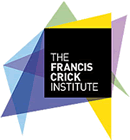About the Project
This 4-year PhD studentship is offered in Dr Peter Ratcliffe’s Group based at the Francis Crick Institute (the Crick).
The Ratcliffe laboratory works on mechanisms by which cells sense oxygen availability and direct a range of adaptive responses that are important in cancer, cardiovascular and metabolic diseases.
In the canonical pathway the central transcriptional mediator, hypoxia inducible factor (HIF) is regulated by the post-translational hydroxylation of specific prolyl and asparaginyl residues in HIF-alpha sub-units. Prolyl hydroxylation at two sites in a central ‘destruction’ domain of HIF-alpha promotes proteolytic destruction by the von-Hippel-Lindau (pVHL) E3 ligase – ubiquitin – proteasome pathway, whilst asparaginyl hydroxylation blocks co-activator to the C-terminal activation domain of HIF-alpha. These hydroxylations are catalysed by members of the 2-oxoglutarate and Fe(II) dependent dioxygenase superfamily, which split molecular oxygen and couple oxidation of the HIF target substrate to the oxidative decarboxylation of 2-oxoglutarate to succinate and carbon dioxide. In hypoxic cells catalysis is suppressed, allowing HIF-alpha to escape destruction and assemble into an ‘oxygen sensitive’ transcriptional complex. Dependence of catalysis on levels of 2-oxoglutarate (a key intermediate in the Krebs cycle and in amino acid metabolism), and on intracellular availability of Fe(II), potentially allows the system to respond to metabolic and redox stresses as well as hypoxia.
Though post translational hydroxylation was considered to be involved only rarely in the biology of intracellular proteins, and was unprecedented as a signalling modification, it is now clear that this type of modification is much more widespread than previously considered. Studies of both the HIF hydroxylases and a series of related 2-oxoglutarate dependent dioxygenases have revealed a range of alternative (non-HIF) substrates that undergo catalytic hydroxylation, including multiple ankyrin repeat domain (ARD) containing proteins and ribosomal / ribosome associated proteins.
The purpose of this project is to define new types of catalytic protein hydroxylation, to characterize the enzymes involved (including regulation by hypoxic, metabolic and redox stresses) and to relate the process to physiological and pathophysiological stresses such as are experienced in cancer cells.
Two complementary approaches will be used (i) the direct identification of post-translation sites that are regulated by hypoxia and related stresses using high-sensitivity comparative proteomic methods such as SILAC (stable isotope labelling by amino acids in cell culture) (ii) affinity pulldown – mass spectrometry (AP-MS) ‘substrate trapping’ methodologies that have been developed within the laboratory. The work builds on pilot data that has established the existence of numerous as yet unassigned sites of oxygen-dependent hydroxylation across the proteome. The student will focus on specific sites at which hydroxylation is strongly regulated by hypoxic/metabolic stress, define the enzyme involved, the physiological role(s), and the relation to disease processes, particularly tumour hypoxia.
Talented and motivated students passionate about doing research are invited to apply for this PhD position. The successful applicant will join the Crick PhD Programme in September 2017 and will register for their PhD at one of the Crick partner universities (Imperial College London, King’s College London or UCL).
Applicants should hold or expect to gain a first/upper second-class honours degree or equivalent in a relevant subject and have appropriate research experience as part of, or outside of, a university degree course and/or a Masters degree in a relevant subject.
APPLICATIONS MUST BE MADE ONLINE VIA OUR WEBSITE BY 12NOON GMT NOVEMBER 14TH 2016. APPLICATIONS WILL NOT BE ACCEPTED IN ANY OTHER FORMAT.
https://www.crick.ac.uk/about-us/jobs-and-study/phd-programme/
References
1. Epstein, A. C., J. M. Gleadle, L. A. McNeill, K. S. Hewitson, J. O'Rourke, D. R. Mole, M. Mukherji, E. Metzen, M. I. Wilson, A. Dhanda, Y. M. Tian, N. Masson, D. L. Hamilton, P. Jaakkola, R. Barstead, J. Hodgkin, P. H. Maxwell, C. W. Pugh, C. J. Schofield and P. J. Ratcliffe (2001)
C. elegans EGL-9 and mammalian homologs define a family of dioxygenases that regulate HIF by prolyl hydroxylation.
Cell 107: 43-54. PubMed abstract (original work – entry to the field)
2. Kaelin, W. G., Jr. and P. J. Ratcliffe (2008)
Oxygen sensing by metazoans: the central role of the HIF hydroxylase pathway.
Molecular Cell 30: 393-402.
3. Cockman, M. E., J. D. Webb, H. B. Kramer, B. M. Kessler and P. J. Ratcliffe (2009)
Proteomics-based identification of novel factor inhibiting hypoxia-inducible factor (FIH) substrates indicates widespread asparaginyl hydroxylation of ankyrin repeat domain-containing proteins.
Molecular & Cellular Proteomics 8: 535-546.
4. Singleton, R. S., P. Liu-Yi, F. Formenti, W. Ge, R. Sekirnik, R. Fischer, J. Adam, P. J. Pollard, A. Wolf, A. Thalhammer, C. Loenarz, E. Flashman, A. Yamamoto, M. L. Coleman, B. M. Kessler, P. Wappner, C. J. Schofield, P. J. Ratcliffe and M. E. Cockman (2014)
OGFOD1 catalyzes prolyl hydroxylation of RPS23 and is involved in translation control and stress granule formation.
Proc Natl Acad Sci U S A 111: 4031-4036.
5. Feng, T., A. Yamamoto, S. E. Wilkins, E. Sokolova, L. A. Yates, M. Münzel, P. Singh, R. J. Hopkinson, R. Fischer, M. E. Cockman, J. Shelley, D. C. Trudgian, J. Schödel, J. S. McCullagh, W. Ge, B. M. Kessler, R. J. Gilbert, L. Y. Frolova, E. Alkalaeva, P. J. Ratcliffe, C. J. Schofield and M. L. Coleman (2014)
Optimal translational termination requires C4 lysyl hydroxylation of eRF1.
Molecular Cell 53: 645-654.

 Continue with Facebook
Continue with Facebook

